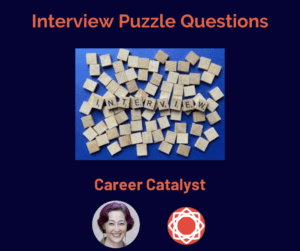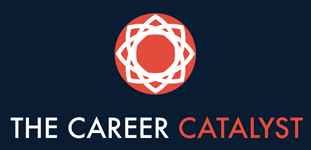
Imagine you get a question like this in an interview: You want to cut a birthday cake into eight equal pieces by only making three cuts. How can you accomplish this?
Or how about, You must turn on a flashlight that requires a pair of working batteries. Eight batteries are available to you, out of which only four work. You need to find the minimum number of battery pairs you need to test.
These are the dreaded puzzle questions! How can you prepare for them in an interview?
First, a little context. Why would they even ask you questions like this? Are they just trying to make you look stupid?
Honestly, it’s extremely rare for an interviewer to truly ask a “gotcha” question. If you think about it, that makes sense: it’s their time, too, and meaningless questions don’t help them get closer to a decision.
So what’s the reason?
Puzzle questions like these are designed to assess your skills at logic and analysis. So the first tip is to take a nice deep breath. And feel free to take time to think about your answer, and to ask any clarifying questions.
Next, see if you can figure out what’s behind the question. These questions usually fall into one of three categories: numeracy (basically math questions), riddles with tricky answers, and probability questions. Once you decide which kind of question they’re asking, it’s easier to figure out your approach to an answer. Numeracy questions are about your basic math skills, probability questions demonstrate your ability to spot numerical patterns, and riddles are often to see how creatively you can apply logic to solve problems.
Now, if your brain works like mine does, try not to worry too much! You’re unlikely to get asked questions like this if you’re interviewing for editorial roles or social work positions or skilled trades jobs. These questions are usually things that get asked of those looking for roles in info tech and business analytics. So, if what I’ve said so far makes you feel like you’re hyperventilating, the good news is that it’s not very likely these are skills employers that appeal to you will be seeking. Breathe easier! For those of you who are in roles where these questions make more sense, look at this helpful article from Indeed, or Google your job and “puzzle questions” to prepare yourself.
And if the top two questions are driving you nuts, here are the answers:
Cake cutting: Cut the cake into quarters using 2 of the cuts – one horizontally down the center of the cake and the other vertically down the center of the cake. This will leave you with 4 pieces (or slices) of cake. Then take all 4 pieces and arrange them in a stack that is 4 pieces high. Finally, you can just cut that stack of 4 pieces in half – using your third and final cut – and then you will end up with 8 pieces of cake!
Batteries: Start labeling the batteries—a good strategy for questions like this. Let’s call these A, B, C, D, E, F, G, and H. Since you cannot compare two items directly, you need a combination of two batteries that you have to put in the flashlight, and if it fails to turn on, then it would mean that either one or both batteries are not working. You’ll need to be a bit circular in your reasoning here.
You can start with the following pairs- AB, BC, and AC. At most, between A, B, and C, only one battery is working if none of the pairs work. This would mean that of the batteries D, E, F, G, and H, at least three will be functional. You can then try the combination DE, and if it doesn’t work, too, then this would mean that out of F, G, and H, at least two will work.
Finally, you can try FG, GH, and FH to find the two working batteries. Thus, a total of seven combinations is required.
(I had to draw this for it to make sense to me, and it still kind of makes my head hurt.)
As you can see from the answers, these are usually going to be questions for people in particular fields. If you’re interested in those fields, look up some additional tips for answering those tricly questions. But remember that the main point is to show them what your approach is and how you think through your answer. Take a deep breath and dive in!



